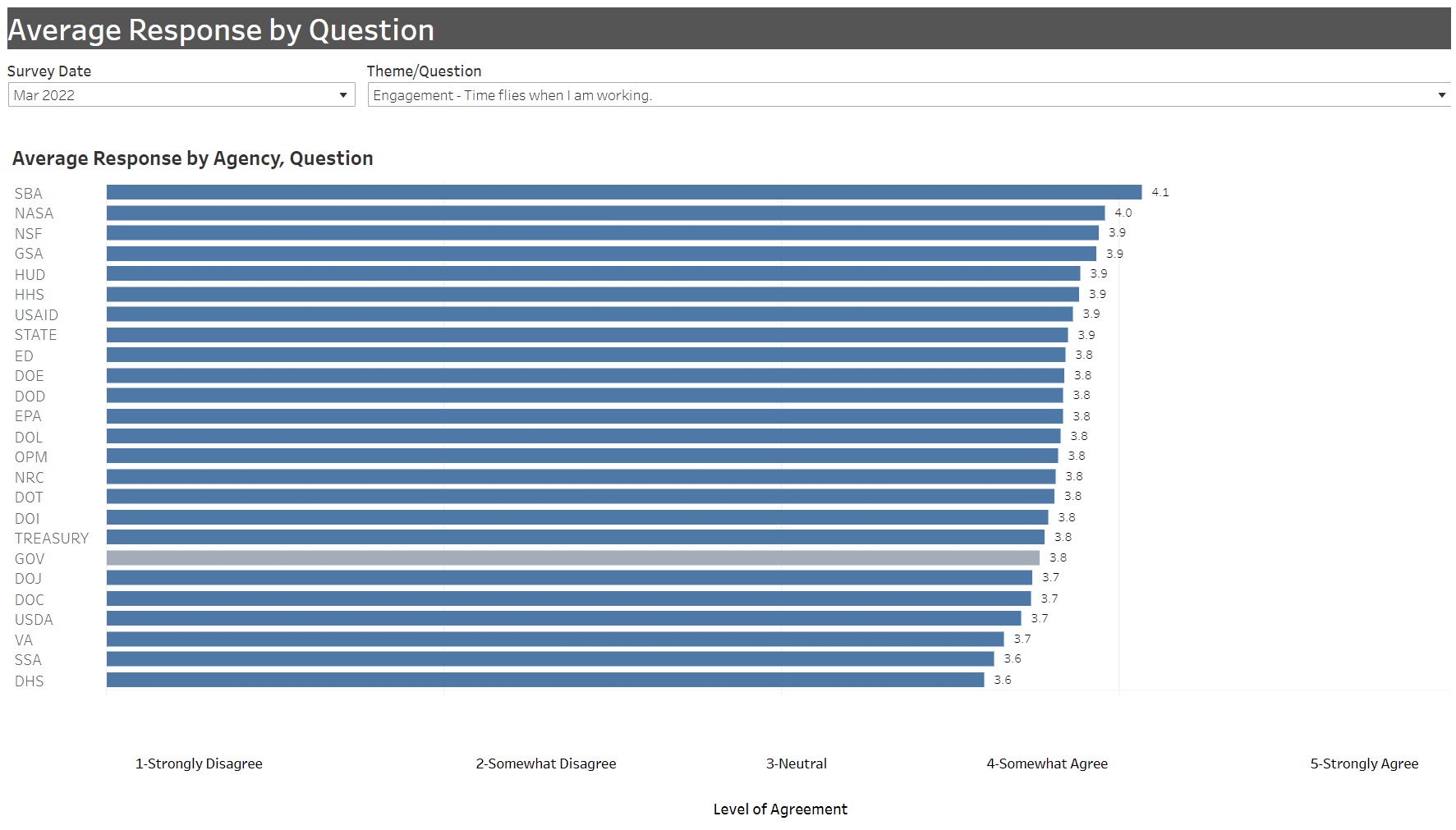Results out for third round of pulse surveys, what should agencies do with the data?
The third round of governmentwide pulse surveys gives senior leaders tools to listen “much more” to their employees.
Agencies saw mixed results from a snapshot of federal employees’ happiness at work, but looking at the feedback is only the first step for senior leaders.
Data from the latest round of the governmentwide pulse survey, which the Office of Management and Budget released on April 28, gives managers an efficient way to listen to their employees on things like return-to-office plans, equity and engagement.
“These pulse surveys really provide a new tool that management hasn’t had before to find out how things are going for their workforce at scale on important issues, particularly in the pandemic as we’re returning to the physical office space. Being able to get a snapshot of what that’s looking like every month or two is really valuable to position leadership to nip issues in the bud before they become much bigger problems,” Jason Briefel, director of policy and outreach at the Senior Executives Association, said in an interview with Federal News Network.
These surveys give agency leaders a quick “pulse” of employees’ feelings about their environment, looking at factors such as workload, exhaustion, diversity and resources for remote work.
Some agencies, like General Services Administration and NASA, had positive results across the board. For example, 92.6% of GSA respondents either agreed or strongly agreed that return to work timelines are being clearly communicated by agency leadership.

Additionally, 83.1% of NASA respondents and 79.8% of Education Department respondents agreed or strongly agreed that they trust agency leadership to do what’s right to protect employees’ health, safety and wellbeing when it comes to re-entry plans. The National Science Foundation also trended positively for this question.
But other agencies fared poorly, such as Social Security Administration, as well as the departments of Homeland Security, and Housing and Urban Development. When asked if they would take a job elsewhere if it offered more workplace flexibilities and remote options, 62.6% of HUD respondents said yes — the highest of any agency.
DHS employees gave the lowest scores when asked if they agree that “time flies when they’re working,” with 20% of the agency’s respondents either disagreeing or strongly disagreeing with that statement. SSA also scored near the bottom for this category.

Regardless of the scores, the pulse surveys give all agencies the same message, Briefel said.
“We need to be listening to our employees much more,” he said. “This is a leading practice that employers have to constantly be getting — feedback from their employees, but doing it in a way that they don’t feel bombarded by those requests for information.”
If agencies are seeing negative results from the pulse surveys, there are many actions senior leaders can take to target issues like exhaustion, former NASA Chief Human Capital Officer Jeri Buchholz said in an interview with Federal News Network.
That includes options from “providing more resources to providing more flexibility for people to balance their work life, to hiring more employees or even to really embrace your employee assistance program resources, to reach out to those people who are about to burn out,” she said.
Many senior leaders who are taking steps to help with issues like work-life balance can do a better job communicating their efforts to employees, Buchholz said.
“Agency management takes a lot of actions that are positive and productive for the workforce and then often neglects to let the workforce know that they have done these things,” Buchholz said.
Pulse surveys show employees’ feelings over the course of about a month, but looking at the trends over the past three iterations combined will yield more comprehensive results, Buchholz said.
“That will let you know whether or not the actions that you’re taking are actually being communicated to the workforce,” she said.
Buchholz said that people who take the time to complete pulse surveys have a message they are trying to communicate to agency leadership.
“If people are attempting to communicate with you, you have a responsibility to let them know that they have been heard,” she said. “At the end of the day, that is the most important thing. It is not what you say, but rather, an acknowledgment that you are listening and what you are hearing is influencing the decisions that you make.”
Senior leaders can also communicate across agencies to learn from others’ successes and make adjustments when necessary. The bottom line is, Briefel said, communication is key.
“Does your workforce know what’s going on? Do they feel like they can believe and trust what you’re telling them? Do they feel like they’re getting the information when they need it? That helps them meet basic needs and not have anxiety take over and make things more stressful than they already are,” Briefel said.
The pulse survey results, along with data from OPM’s 2021 Federal Employee Viewpoint Survey, provide opportunities to understand and then make changes to work environments. That can be based on both individual agency feedback, as well as governmentwide results.
Office of Personnel Management Director Kiran Ahuja said in an interview with Federal News Network that OPM wants to be a resource to help agencies address problem areas based on the data.
“We’re always telling our agency partners spend time with the data, really dive into it and see where there are opportunities to address issues component by component,” Ahuja said.
Copyright © 2025 Federal News Network. All rights reserved. This website is not intended for users located within the European Economic Area.
Drew Friedman is a workforce, pay and benefits reporter for Federal News Network.
Follow @dfriedmanWFED






